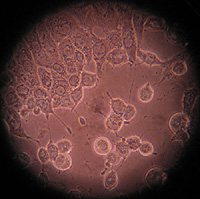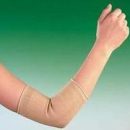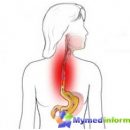What is ankylostomosis? As the disease flows? How to treat Ankilostomy? Answers to these questions you will find in the article.
Content
Ankostomomosis

Ankilostomomosis - Helmintosis (nematodosis), a glitstic disease flowing with
Allergic lesions of the skin, respiratory organs (at an early stage), gastrointestinal tract and iron deficiency anemia (late stage).
Pathways - Ancylostoma Duodenale, Rightsee Ancylostoma Ceylanicum, Necator Americanus, AncyLostoma Braziliense.
Disease
Wide widespread. Necator American register in America,
Asia and Africa; ANCYLOSTOMA DUODENALE - in Japan, China, India, Central
Asia, the countries of the Mediterranean basin and the Transcaucasus. Foci of infection can be formed in coal and mining mines with high
ambient temperature, humidity and poor sanitary condition.
Mechanisms of infection - fecal-oral (The mechanism of penetration of the causative agent from the intestine of the patient in the mouth of the organism of another person) and contact (for example, through any object of public).
Lichwood
introduced through the skin (for example, when working with soil through the skin of the hands,
walking barefoot and t.D.). After penetration, they migrate by
blood and lymphatic paths in light capillaries. Hence the larvae
penetrate the respiratory tract, reach the pharynx and swallow. Sick
not dangerous for others, t.To. At the time of isolation from the body, the eggs are not contagious.
As the disease flows
Incubation
period - 40-60 days. In most cases, the number of parasites is small,
and the disease proceeds asymptomatic. Symptoms of more hard forms
depends on the method of penetration of the parasite in the body. When penetrating
Through the skin is characterized by itchy papool-visiculous (Similar to rash with chickenpox), Pustulatory (strength formations with purulent content) and erythematous (redness of the skin) rash against the backdrop of pale skin (usually on the limbs);
persist for several months. Massive invasion (infection) may
lead to the edema. When migrating larvae through respiratory
The paths are possible bronchitis, pneumonia, pleurisy.
Symptoms of damage to the gastrointestinal tract:
Heartburn, Vomiting, Pain in the epigastric area. Symptoms of damage to the central nervous system;
lethargy, lagging in mental and physical development. Most
Characteristic manifestation - hypochromic iron deficiency anemia (anemia at which a reduction in hemoglobin content in red blood cells) and hypoalbuminemia (reduction of albumin content in
serum) Due to chronic blood loss. In the most severe
Cases The number of erythrocytes is reduced to 1012l, and the content of HB
- up to 100 g / l.
Research Method - Detection of parasite eggs in feces.
How to treat Ankilostomy
- Under anemia - iron preparations; In severe cases - blood transfusion
- Etiotropic (antimicrobial) therapy
- Furniture of 100mg 2 p / day for 3 days. Contraindicated in pregnancy
- Pyrantel Pamoate at 11 mg / kg 1 p / day (no more than 1 g) within 3 days (with Necator Americanus) Or once (at AncyLostoma Duodenale). Contraindicated in pregnancy.









